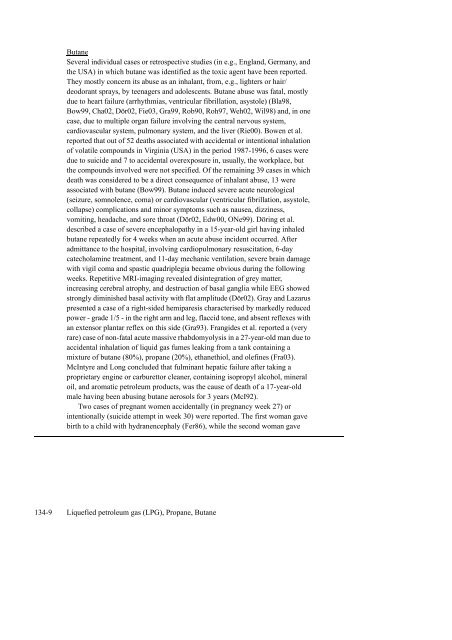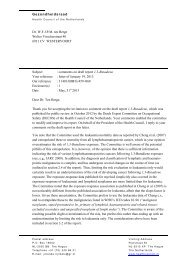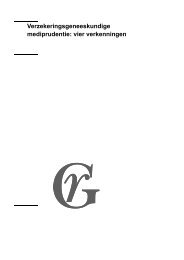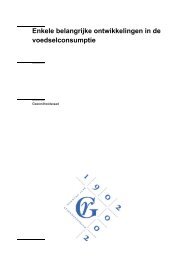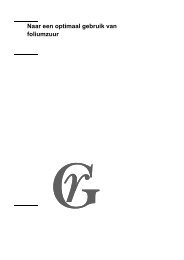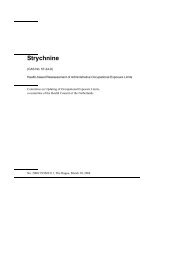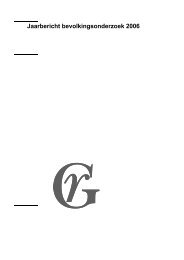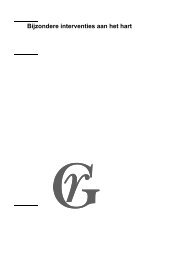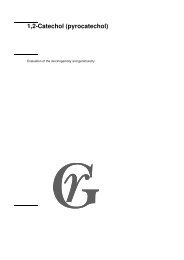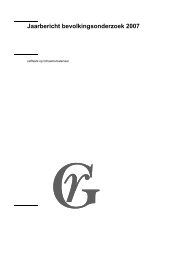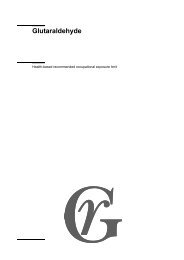Liquefied petroleum gas (LPG) - Gezondheidsraad
Liquefied petroleum gas (LPG) - Gezondheidsraad
Liquefied petroleum gas (LPG) - Gezondheidsraad
You also want an ePaper? Increase the reach of your titles
YUMPU automatically turns print PDFs into web optimized ePapers that Google loves.
Butane<br />
Several individual cases or retrospective studies (in e.g., England, Germany, and<br />
the USA) in which butane was identified as the toxic agent have been reported.<br />
They mostly concern its abuse as an inhalant, from, e.g., lighters or hair/<br />
deodorant sprays, by teenagers and adolescents. Butane abuse was fatal, mostly<br />
due to heart failure (arrhythmias, ventricular fibrillation, asystole) (Bla98,<br />
Bow99, Cha02, Dör02, Fie03, Gra99, Rob90, Roh97, Weh02, Wil98) and, in one<br />
case, due to multiple organ failure involving the central nervous system,<br />
cardiovascular system, pulmonary system, and the liver (Rie00). Bowen et al.<br />
reported that out of 52 deaths associated with accidental or intentional inhalation<br />
of volatile compounds in Virginia (USA) in the period 1987-1996, 6 cases were<br />
due to suicide and 7 to accidental overexposure in, usually, the workplace, but<br />
the compounds involved were not specified. Of the remaining 39 cases in which<br />
death was considered to be a direct consequence of inhalant abuse, 13 were<br />
associated with butane (Bow99). Butane induced severe acute neurological<br />
(seizure, somnolence, coma) or cardiovascular (ventricular fibrillation, asystole,<br />
collapse) complications and minor symptoms such as nausea, dizziness,<br />
vomiting, headache, and sore throat (Dör02, Edw00, ONe99). Döring et al.<br />
described a case of severe encephalopathy in a 15-year-old girl having inhaled<br />
butane repeatedly for 4 weeks when an acute abuse incident occurred. After<br />
admittance to the hospital, involving cardiopulmonary resuscitation, 6-day<br />
catecholamine treatment, and 11-day mechanic ventilation, severe brain damage<br />
with vigil coma and spastic quadriplegia became obvious during the following<br />
weeks. Repetitive MRI-imaging revealed disintegration of grey matter,<br />
increasing cerebral atrophy, and destruction of basal ganglia while EEG showed<br />
strongly diminished basal activity with flat amplitude (Dör02). Gray and Lazarus<br />
presented a case of a right-sided hemiparesis characterised by markedly reduced<br />
power - grade 1/5 - in the right arm and leg, flaccid tone, and absent reflexes with<br />
an extensor plantar reflex on this side (Gra93). Frangides et al. reported a (very<br />
rare) case of non-fatal acute massive rhabdomyolysis in a 27-year-old man due to<br />
accidental inhalation of liquid <strong>gas</strong> fumes leaking from a tank containing a<br />
mixture of butane (80%), propane (20%), ethanethiol, and olefines (Fra03).<br />
McIntyre and Long concluded that fulminant hepatic failure after taking a<br />
proprietary engine or carburettor cleaner, containing isopropyl alcohol, mineral<br />
oil, and aromatic <strong>petroleum</strong> products, was the cause of death of a 17-year-old<br />
male having been abusing butane aerosols for 3 years (McI92).<br />
Two cases of pregnant women accidentally (in pregnancy week 27) or<br />
intentionally (suicide attempt in week 30) were reported. The first woman gave<br />
birth to a child with hydranencephaly (Fer86), while the second woman gave<br />
134-9 <strong>Liquefied</strong> <strong>petroleum</strong> <strong>gas</strong> (<strong>LPG</strong>), Propane, Butane


